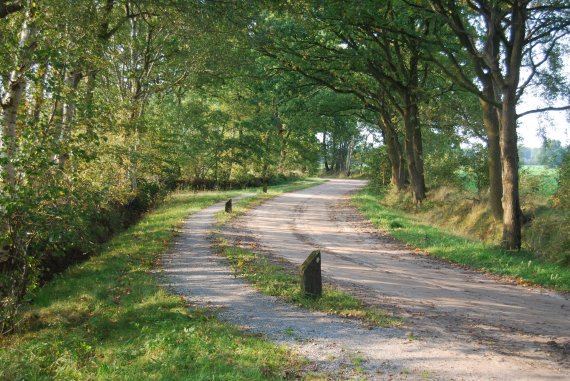Farmers have many environmental laws to follow: the nitrate directive, the ammonia directive and the water framework directive, just to name a few. ‘Many specialized studies for each environmental aspect have been done. We wanted to take an integrated look this time and find out the extent to which farming has affected the environment from the landscape’s point of view,’ says researcher Marthijn Sonneveld of the Land Dynamics Group. Dung from farms can get into ground water in the form of nitrate, and be present as ammonia in the surroundings. Both nitrate and ammonia emissions in this area are however within the legal limits. The problem lies with too much nitrogen deposition. The law requires nitrogen emission to be reduced to protect vulnerable species in nature areas. Model calculations carried out by Alterra show that 72 percent of the nitrogen emission in fact originates from industrial, traffic and farming activities outside the area. ‘So you have to look outside the area to solve the problem,’ says Sonneveld. ‘Even if all livestock farming in the area were to cease, the environmental standard would still be exceeded!’ He expects the results to play a role in the ongoing discussion on area management. This theme is very relevant in this area because farmers here are closely organized and through study groups, can help one another to reduce environmental pollution. The Northern Frisian Woodland, which lies between Drachten and Dokkum, is a national landscape. The area has a unique character, with many dairy farms, wooded embankments and windmills. Farmers in this area have for years been lobbying for self management whereby they observe environmental guidelines loosely but are still able to achieve environmental aims. Sonneveld was commissioned by Transforum to find out if the farmers can indeed meet these environmental aims. Wageningen UR does much research in this area. Currently, Wageningen soil expects, economists, management specialists and livestock farming experts are carrying out a life cycle analysis to determine the extent of environmental pollution and the ecological footprint from livestock farms.
Environmental pollution comes from afar
Although farmers in the Northern Frisian Woodland are able to meet the nitrate and ammonia requirements of the government, they are unable to meet the environmental standard for nature areas. But there's little they can do about this, research by Alterra shows.

